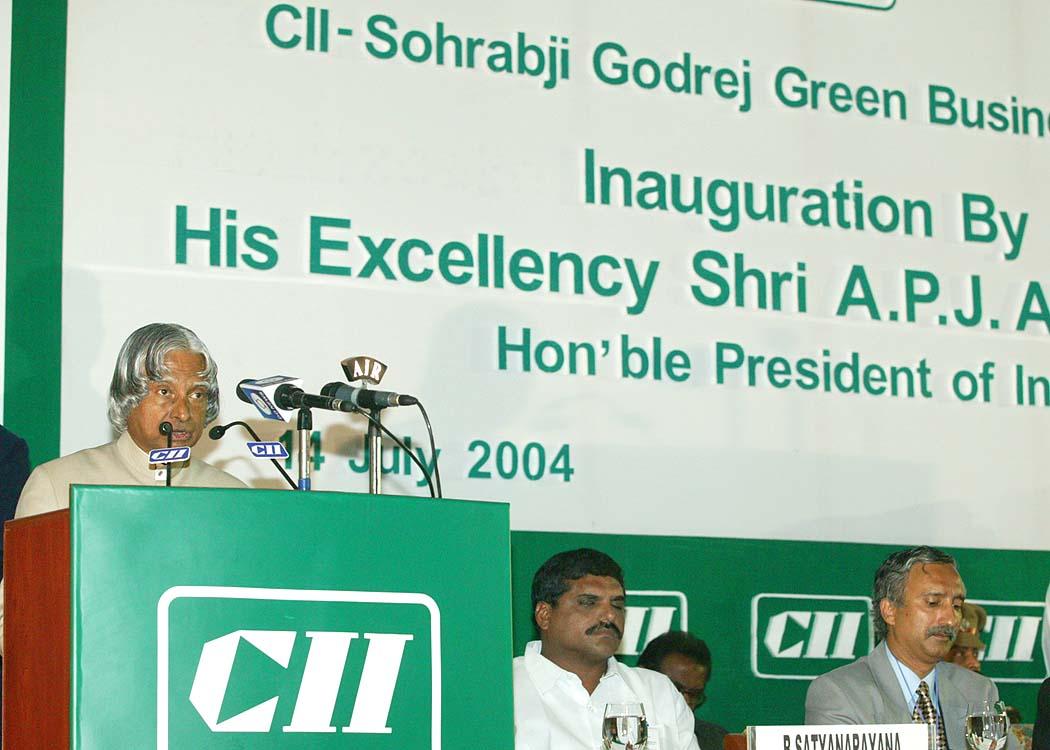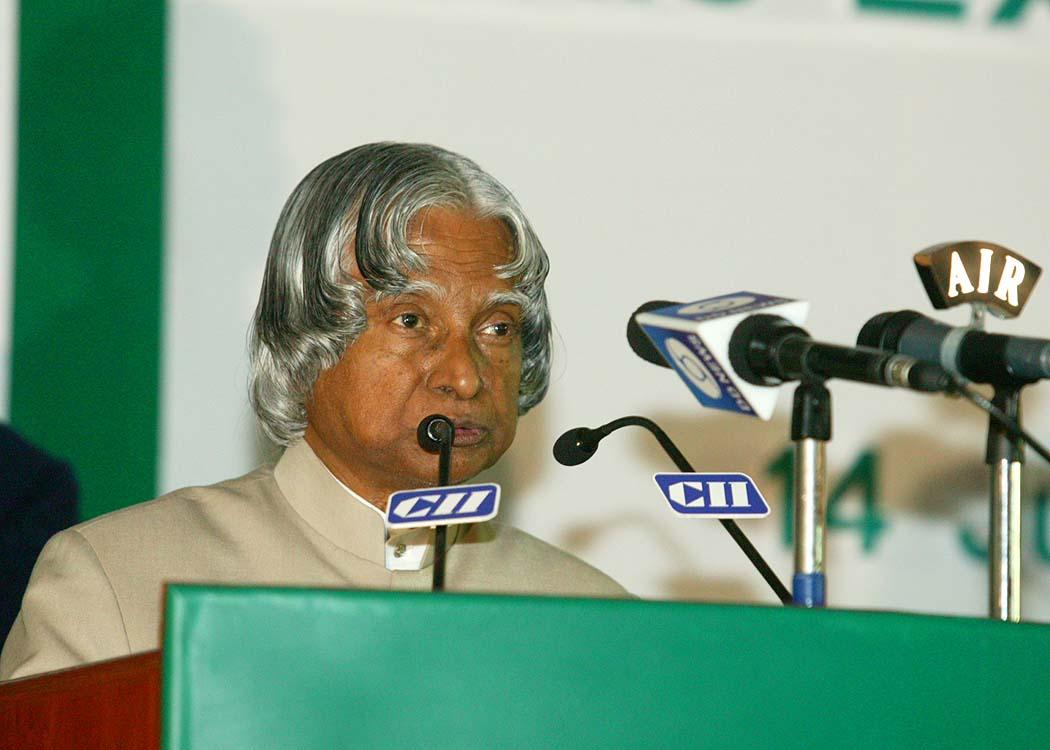Address During The Inauguration Of Green Business Centre, Hyderabad
Hyderabad : 14-07-2004
I am delighted to participate in the inauguration of the Green Business Centre. My greetings to the organizers, distinguished guests and all the participants of this function. This Green Business Centre will be the nucleus for creating the future in India for renewable energies; benign environment; and monitoring and progressively mitigating the effects of climatic change. Your mission for this building is that ?Green Makes Business Sense.? As you succeed and grow in this venture I am sure you will carry the nation with you.
The typical features, which you have cited for Green Buildings, are noteworthy goals towards greater energy efficiency and use of renewable energies, efficient water management and above all caring for the environment.
The developed societies thriving on consumption isolate pieces of nature, take them into the laboratory to study and control them for their commerce. The purpose should be to integrate with Nature. Now I would like to share with you two examples of such integration.
Large Scale Solar Cooking
Solar cooking is one of the important applications in the field of renewable energy. During the last 20 years many designs and concepts have been developed and tested in the field of family cooking in the form of box type solar cookers. Now Swiss technology has come to complement the box cookers. With this technology it is possible to cook for larger number of persons using solar energy within a short span of time. Prajapita Brahmakumaris Iswariya Vishwa Vidyalaya has become one of the institutions, which have manufactured in their own workshop at their premises and installed a large solar steam cooking system at their headquarters ?Shantivan Complex,? in Rajasthan. The system is designed for cooking 2000 meals twice daily based on the certain technological collaboration. Typically 1 Mega Watt hour per day power is generated.
I am citing this example to suggest to you the necessity for making such systems in all our big apartments, hotels and industrial complexes, which can substantially reduce the energy, cost and also minimize the pollution created by using other forms of energy sources.
High Efficiency Nano Crystal LEDs
Dr. R.N. Bhargava, a Nano technologist from USA recently met me at Rashtrapati Bhavan. He demonstrated to me a very optimal and efficient lighting system based on Nano crystals. The recent advances in semi conductor based lighting chips ? Light Emitting Diodes (LED) can provide six hours of reliable light to every home or shop in a village at virtually no recurring energy cost and minimum installation cost. These LEDs require a tiny fraction of energy used for other forms of lighting. LED based lighting can be easily provided with solar panels or foot pedal generators. For nearly 40 years LEDs were weak color light sources (Green, Amber and Red) used mostly as indicators and numeric light. LED technology in recent years has improved dramatically. Today LEDs, using 10 watt of power could produce light equivalent to a sixty-watt filament lamp. New discoveries in Nano technology make LEDs much brighter and make the products less expensive, which can revolutionize rural electrification for lighting. The field is fertile for research and development of high efficient and low cost LEDs, using Nano-Crystal.
Energy consumption: Targets
It is reported that the total energy consumption patterns in Indian Buildings are as follows: Commercial sector :
21.6 billion kwh (32% for A/C, 60% for lighting, 8% others)
Residential sector :
36 billion kwh (35% light, 29 % fan, 7% cooler, 14% Refrigeration, 4% A/C, 11% others)
One of our experts says that ?For a normally constructed building, the present energy consumption is 300 kwh per m sq annually which can be brought down to 140 kwh per m sq annually by proper designs/details/philosophy, where as in Germany with its strict energy codes it is reported that the consumption is only 50 kwh per m sq annually.
It is all the more important for India to achieve at least a target of 100 kwh per m sq annually with in the next 5 years. This will need coordinated effort between architects, builders and the energy engineers, a newly developed expertise.
The architects and building planners have to play a very important role in the design of the building with these features. The seeds of this perspective have to be sown in the schools of architecture and town planning. Energy conservation should start right from the location of the site, the direction of buildings, windows, doors, glare etc., the aim should be to use maximum advantage of the sun and wind, while minimizing the wasteful heat load from sun into the buildings and roofs.
I am sure that the CII will embark on many more such public private partnerships and consider the generation of energy efficient building codes.
Conclusion
The earth is a living planet. In our galaxy earth is probably the only living planet. We have therefore a great responsibility not to hurt it. For our future generations to survive, we must be friendly to earth and lovable in taking from it.
I wish you all success in your endeavours to be part of the futures of a clean and green India.
May God Bless You.


